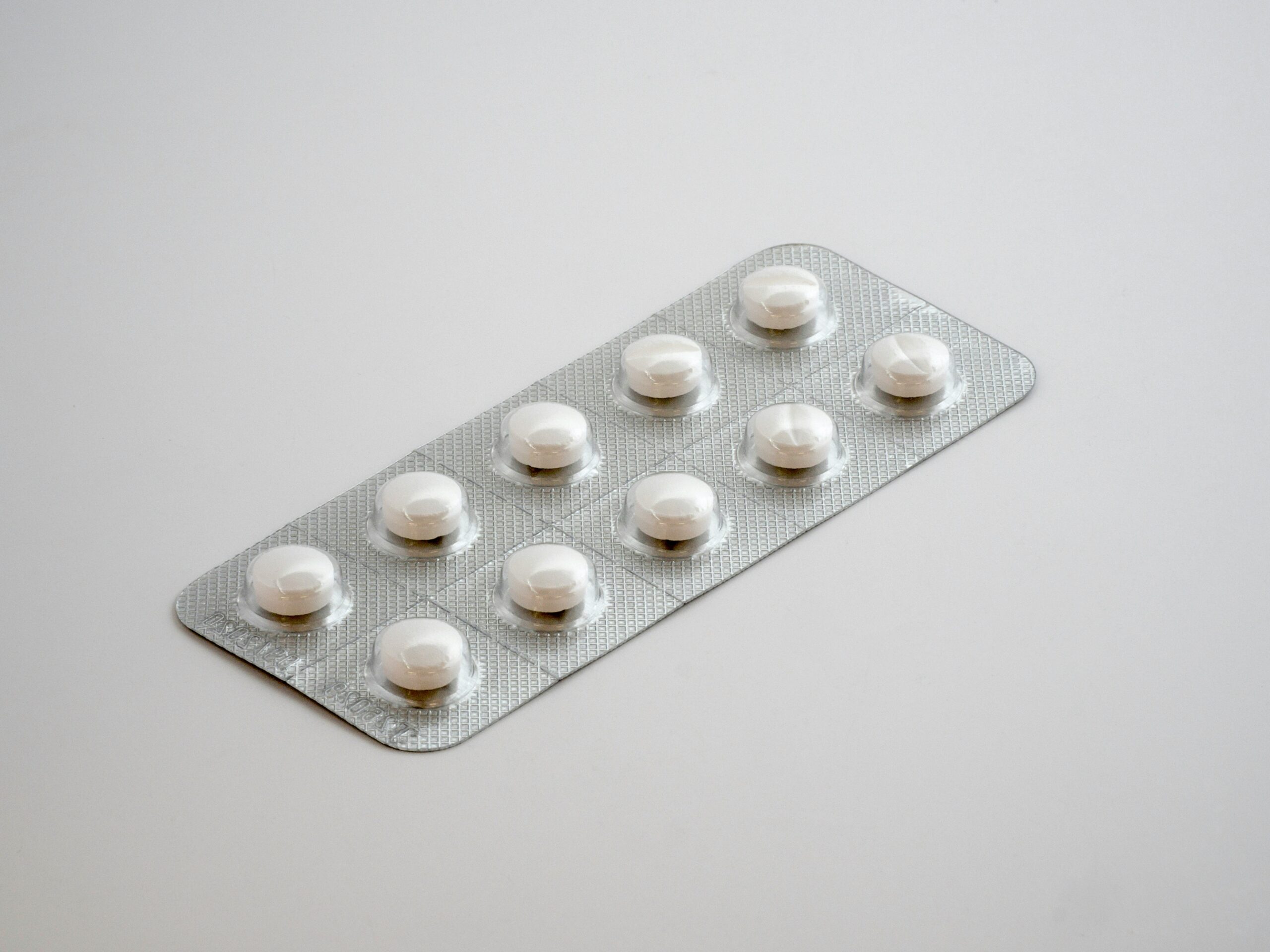PID stands for pelvic inflammatory disease, a disease associated with the female reproductive system. The genital tract infection is most common in sexually active young women and may be related to an STD. The direct cause is pathogens that develop within the pelvic organs and cause inflammation. Various types of bacteria and pathogens can cause the pathological condition.
Pelvic inflammatory disease can have symptoms of multiple intensities. Acute, chronic, and subclinical types of the disease are distinguished. Untreated pelvic inflammatory disease can cause many complications, so diagnosis is essential. PID can be diagnosed based on the patient's history and accompanying pain symptoms. Women in whom the disease is suspected should undergo a pelvic examination to confirm inflammation.
The differential diagnosis should exclude other conditions and diseases that may produce similar symptoms. Mild and moderate types of PID are treated with antibiotics. In severely ill women or pregnant women, treatment may require hospitalization. Concurrent treatment of sexual partners is also recommended. Great emphasis is now placed on patient education and prevention of PID. Knowledge about the safety of sexual life can protect against disease and complications.

The disease syndrome usually occurs in women aged between 15 and 25![]() . The rate of the disease has decreased in recent years; however, cases of female patients with PID continue to be reported. Inflammation affects the endometrium
. The rate of the disease has decreased in recent years; however, cases of female patients with PID continue to be reported. Inflammation affects the endometrium![]() , fallopian tubes
, fallopian tubes![]() , ovaries
, ovaries![]() , or pelvic peritoneum
, or pelvic peritoneum![]() .
.
Indirect causes of pelvic inflammatory disease are pathogens that cause inflammation and associated pain symptoms. In most cases, the infection is caused by sexually transmitted bacteria, so PID is more common in sexually active women. However, pathogens not associated with STDs can also cause pelvic inflammatory disease. Causes, therefore, include:
The pathogens causing PID are Chlamydia trachomatis![]() and Neisseria gonorrhoeae
and Neisseria gonorrhoeae![]() . Chlamydia trachomatis bacteria can cause dangerous inflammation and obstruction of the fallopian tubes. Chlamydia may not produce any symptoms for many years, which makes diagnosis difficult. Also, pelvic inflammatory disease caused by chlamydia is usually asymptomatic. In contrast, Neisseria gonorrhoeae causes gonorrhea, which is associated with a more severe course of PID.
. Chlamydia trachomatis bacteria can cause dangerous inflammation and obstruction of the fallopian tubes. Chlamydia may not produce any symptoms for many years, which makes diagnosis difficult. Also, pelvic inflammatory disease caused by chlamydia is usually asymptomatic. In contrast, Neisseria gonorrhoeae causes gonorrhea, which is associated with a more severe course of PID.
Pathogens that cause bacterial vaginitis may also be responsible for PID. Bacterial vaginitis is a condition resulting from an imbalance of microbiology in the vagina. Symptoms include changes associated with discharge, burning, discomfort, and mucosa swelling. Sometimes, however, the symptoms are low intensity, or the infection is asymptomatic. In contrast, bacterial species such as Peptostreptococcus![]() and Bacteroides
and Bacteroides![]() can contribute to pelvic inflammatory disease.
can contribute to pelvic inflammatory disease.

Further pathogens causing pelvic inflammatory disease can be cervical microbes, including Mycoplasma genitalium![]() . Mycoplasma infection also occurs through sexual contact, but infection sometimes occurs indirectly through the use of the same personal hygiene items. Mycoplasma genitalium in women usually causes bacterial vaginitis. In women, this type of bacteria can also cause inflammation of the cervix and pelvic organs. It can, in turn, cause PID.
. Mycoplasma infection also occurs through sexual contact, but infection sometimes occurs indirectly through the use of the same personal hygiene items. Mycoplasma genitalium in women usually causes bacterial vaginitis. In women, this type of bacteria can also cause inflammation of the cervix and pelvic organs. It can, in turn, cause PID.
It is worth mentioning that bacteria not associated with reproductive tract disease can also lead to PID. Respiratory pathogens such as Haemophilus influenza![]() , Streptococcus pneumonia
, Streptococcus pneumonia![]() , or Staphylococcus aureus
, or Staphylococcus aureus![]() can lead to PID. Therefore, influenza and pneumonia can pose a risk of pelvic inflammatory disease; however, it happens much less frequently than sexually transmitted diseases.
can lead to PID. Therefore, influenza and pneumonia can pose a risk of pelvic inflammatory disease; however, it happens much less frequently than sexually transmitted diseases.
Intestinal bacteria can also lead to pelvic inflammatory disease. They are another group of pathogens not associated with sexually transmitted diseases. Rare cases have been observed in which pathogens such as Escherichia coli![]() , Bacteroides fragilis
, Bacteroides fragilis![]() , or group B streptococci
, or group B streptococci![]() caused PID. Gastrointestinal infections and the spreading of these bacteria in the body can, therefore, result in pelvic inflammatory disease in women.
caused PID. Gastrointestinal infections and the spreading of these bacteria in the body can, therefore, result in pelvic inflammatory disease in women.

The inflammatory process of the pelvic organs may be asymptomatic. In some patients, the acute type progresses to a chronic form, with a tendency to recur and exacerbate. Consequently, the intensity of the symptoms may vary according to the individual case. However, pain symptoms that may suggest PID should be analyzed, as failure to implement treatment can have serious consequences. Symptoms of pelvic inflammatory disease include:
The most crucial symptom of PID is lower abdominal and pelvic pain, which causes women considerable discomfort. It can be a feeling of constant pressure in the lower abdomen, located in the lower pelvis. In some cases, pelvic pain may radiate to the spine. The pain may also be sudden and spasmodic, sometimes accompanied by weakness and a sub-febrile state. Pelvic discomfort should prompt the patient to seek medical attention.
Normal vaginal discharge is an odorless substance, whereas altered vaginal discharge may give off an unpleasant odor. In the case of PID, the discharge may have an inappropriate consistency and odor due to inflammation caused by pathogens. Excessive discharge may also result from a pathological condition. The discharge due to inflammation may also have an altered color.
In addition to abnormal discharge, women with PID may also notice vaginal bleeding. Abnormal bleeding occurs between periods. Bleeding from the genital tract may also occur after intercourse. Such abnormalities should prompt a woman to see her doctor, as bleeding symptoms may also indicate other conditions.

In PID, the intensity of painful symptoms during menstruation may increase. Pain and discomfort in the lower abdomen do not only occur during menstruation. However, menstruation can become extraordinarily painful and make daily functioning difficult. Painful menstruation is a common symptom reported by women with pelvic inflammatory disease.
Dyspareunia is a symptom denoting recurrent or persistent genital pain occurring during sexual intercourse. It often becomes a cause of stress, psychological problems, and deterioration of the relationship with the partner. Pain during intercourse is another symptom of pelvic inflammatory disease, which significantly reduces the comfort of women's lives.
Other symptoms of PID can include urinary symptoms, such as a change in the smell of urine. Patients report an intense and smelly urine odor![]() . Bacteria causing inflammation can also affect the urinary tract, causing various symptoms.
. Bacteria causing inflammation can also affect the urinary tract, causing various symptoms.
If a woman is diagnosed with lower abdominal AND pelvic pain, PID should be suspected. The history should analyze the pain symptoms, including the onset and nature of the pain. Differential diagnosis is also essential to rule out diseases with similar symptoms to pelvic inflammatory disease. Investigations used in PID belong to:

A pelvic examination is essential in PID. On gynecological examination, patients with pelvic inflammatory disease experience tenderness![]() of the cervix, uterus, and adnexa. Soreness is felt when touching and pressing the lower abdomen. The tenderness and pain in the lower abdomen are usually bilateral. The gynecological examination also allows assessment of cervical discharge and observation of inflammation where a bacterial vaginal infection is present.
of the cervix, uterus, and adnexa. Soreness is felt when touching and pressing the lower abdomen. The tenderness and pain in the lower abdomen are usually bilateral. The gynecological examination also allows assessment of cervical discharge and observation of inflammation where a bacterial vaginal infection is present.
A bacterial culture of genital tract secretions can help diagnose pelvic inflammatory disease. Such an examination can indicate the presence and type of pathogens in a woman's genital tract. The isolated battery strains may cause inflammation, causing pain and discomfort.
The results of a blood test may be additional and helpful indicators of pelvic inflammatory disease. Laboratory blood tests can indicate an increase in inflammatory parameters and can also be useful in ruling out different diseases in the differential diagnosis.
In some cases, imaging tests are also done. These belong to transvaginal ultrasound![]() and MRI
and MRI![]() . These studies can reveal thickened and fluid-filled fallopian tubes, which indicate inflammation in this area. Sometimes, a fallopian tube abscess can be seen in imaging studies.
. These studies can reveal thickened and fluid-filled fallopian tubes, which indicate inflammation in this area. Sometimes, a fallopian tube abscess can be seen in imaging studies.
Selected cases may require a laparoscopic procedure to exclude or treat the acute condition. In most women with pelvic inflammatory disease, laparoscopy confirms and visualizes inflammation of the fallopian tubes and uterus. In diagnosing pelvic inflammatory disease, laparoscopic examination is beneficial but sometimes effective. Laparoscopy may fail to detect endometritis or early inflammation of the fallopian tubes. Additionally, it is an invasive procedure that may not be available in some medical facilities.
Clinical experts recommend various broad-spectrum antimicrobial agents. Treatment mainly covers the most common bacteria and possible pathogens, regardless of test results.

Treatment can be challenging, as some pathogens can be resistant to drugs. However, for mild to moderate inflammation, antimicrobial therapy should be successful. Therefore, treatment should be initiated quickly based on clinical suspicion so that methods can be implemented as early as possible. Depending on the case, antibiotics such as d*********e![]() and m***********e
and m***********e![]() are used. Antibiotic therapy usually lasts two weeks.
are used. Antibiotic therapy usually lasts two weeks.
Placing the patient under special hospital care is more necessary than where there is pregnancy![]() or severe clinical illness. PID with a pelvic abscess may also be an indication for hospitalization. Hospitalization treatment also takes place where there is a need for surgical intervention.
or severe clinical illness. PID with a pelvic abscess may also be an indication for hospitalization. Hospitalization treatment also takes place where there is a need for surgical intervention.
Pelvic inflammatory disease can be asymptomatic, which is a risk. Untreated PID can lead to numerous complications and long-term consequences. Thus, prompt treatment is essential in women with suspected PID. Late implementation of treatment is associated with worsened patient outcomes. Complications of PID include:

With delayed treatment of PID, pelvic pain can become chronic. It is a complication that affects up to one-third of women with pelvic inflammatory disease. Chronic pain is associated with scarring and adhesions due to inflammation. Recurrent PID often causes chronic pelvic pain in female patients. Chronic pelvic pain may persist for many months or even years.
Women who have suffered from PID are at risk of ectopic pregnancy. An ectopic pregnancy is an abnormal pregnancy in which the egg cell moves more slowly and implants outside the uterus. It prevents the proper development of the embryo and is also a risk to the woman's health and life. In some cases, it can even lead to her death.
The increased possibility of ectopic pregnancy in women with PID is associated with damage to the fallopian tubes. The symptoms of ectopic pregnancy can be ambiguous. Hence, it is not uncommon for the diagnosis of this problem to be complicated. The test that allows ectopic pregnancy to be diagnosed, and it can be diagnosed as early as about 5-6 weeks, is transvaginal ultrasound.
The result of untreated or poorly treated PID can be infertility. Infertility is the inability and problems to get pregnant for at least 12 months despite regular sexual intercourse and without using any contraceptives. It is a long-term complication that also affects women who go through the infection asymptomatically.
Inflammation of the PID can cause severe damage to the fallopian tubes, including loss of ciliary epithelial cells of the fallopian tube and obstruction of the fallopian tube. Studies show a significant increase in infertility in women who have PID. Infertility is a complication that is more likely to occur with chlamydia infection![]() . Thus, it is essential to implement treatment as soon as possible to avoid the consequences of PID.
. Thus, it is essential to implement treatment as soon as possible to avoid the consequences of PID.
PID is an inflammatory disease of the genital tract. It has a wide range of symptoms or may be asymptomatic. Various pathogens cause it. Most commonly, the development of PID occurs following a sexually transmitted disease. Therefore, young and sexually active women are in the risk group. Various investigations can diagnose PID; however, the mere observation of pelvic pain should prompt suspicion of the disease. Prompt implementation of treatment is essential, as PID can lead to long-term complications.